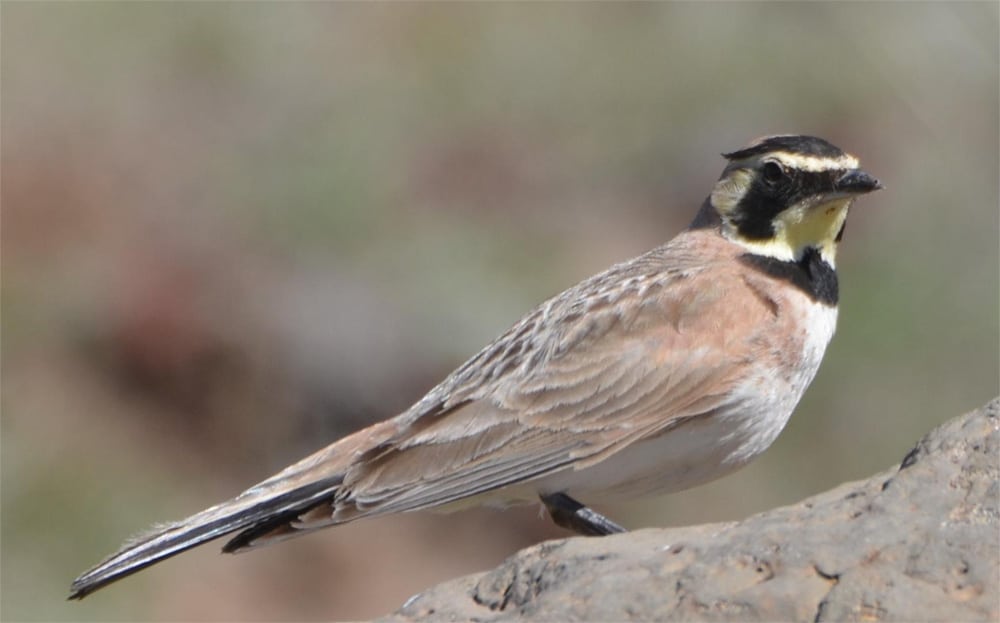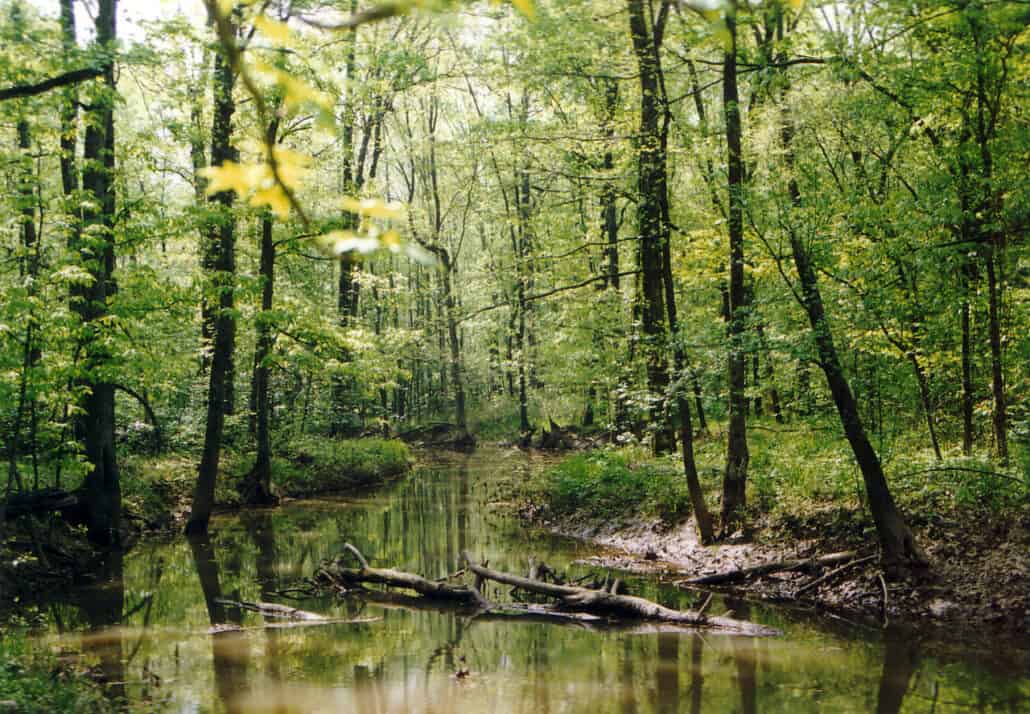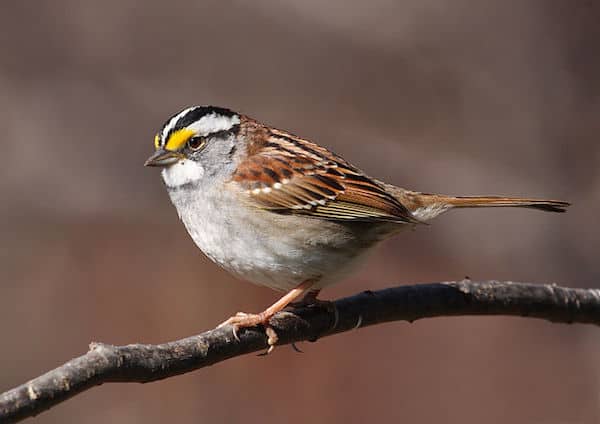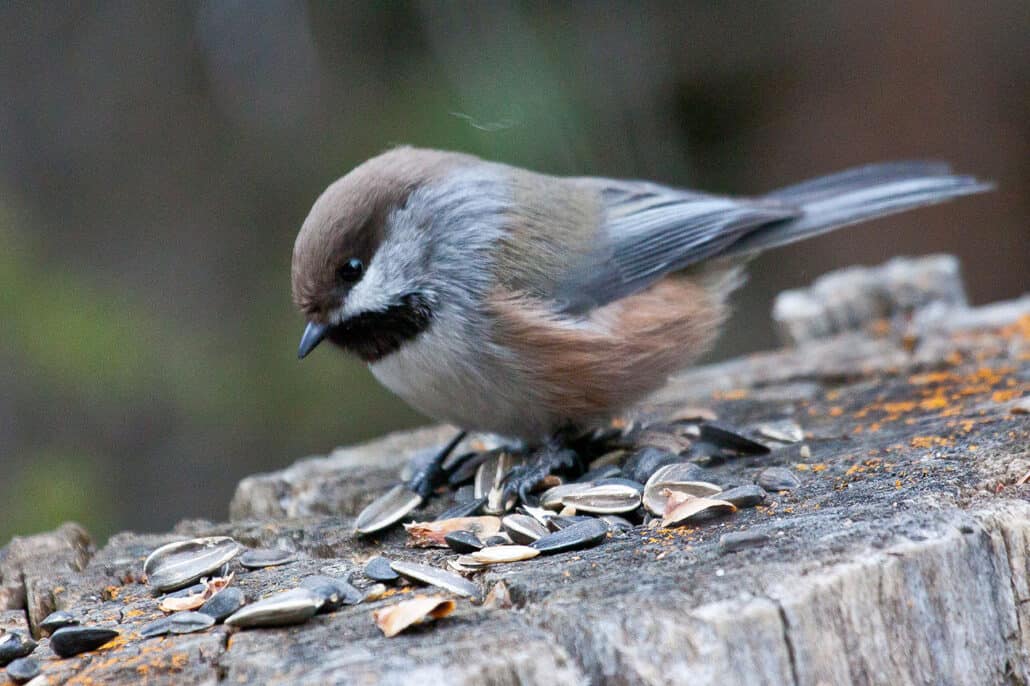Horned larks, McCown’s longspurs, rosy finches, and lark buntings may not fit the image most people have of birds attracted to feeding stations, but they’re common customers in my backyard.
When a job transfer forced us to move from rural Missouri to the wide open spaces of southeastern Wyoming, I was afraid I would have to give up the pleasure of seeing and feeding birds in my yard; the arid, treeless high plains where we wou1d live were certainly not the chickadees, cardinals, and woodpeckers I was used to. However, I soon came to realize that birds live everywhere and I could enjoy their company no matter where I lived.
Since we had brought our horses with us to Wyoming, we bought a small acreage several miles out of town. Although it didn’t have a large, established windbreak like some of the nearby ranches, we were luckier than most, as the place came with a few large pine trees and a blue spruce. Otherwise, though, our new home was surrounded on all sides by rolling hills, sparsely covered with low-growing grasses.
To my eyes, used to the lush woods and fields of the Midwest, it seemed a bleak and barren place, during the middle of winter when we arrived.
As we settled into our new home, I put up a bird feeder almost as an afterthought. Much to my surprise, within a few days I saw a bird picking up seeds beneath it; it was a horned lark, a common resident of the area. The lark returned the next day with several others, and before long I had a flock of about 25. These plains were not so lifeless after all!
Because of their neat and easily identifiable field marks, their seemingly cheerful nature and incredible tameness, horned larks became the “chickadees of the plains” for me. I also began to call them my “foul weather friends” as I watched my small flock grow to more than a hundred during snowstorms.
As I continued to put out seed and water, I began seeing other birds, most of them species new to me. These I excitedly added to my life list. The horned larks brought Lapland longspurs and snow buntings, both of which flock with them in winter. They are now regular winter customers.
I also found myself feeding a number of rosy finches, which winter in the lowlands and breed in the mountains above the timberline. I’ve had three races of these finches—gray-crowned, brown-capped, and black, the last being a new record for this part of Wyoming.
In early spring, McCown’s longspurs begin arriving from their winter quarters in the southwestern United States and northern Mexico. First one, then four, then 12, then as many as 45 at one time congregate outside my windows feeding on the millet I put out. These birds spend the summer and often bring their newly fledged young with them to eat. Like the horned larks, they are tame and will readily come to eat within just a few feet of where I am sitting or where I stretch out to take photographs of them.
Every couple of years, large groups of lark buntings, another summer prairie resident, come to eat in my yard and remain nearby to breed. While they’re here the males add pizzazz to the area with their flashy black-and-white markings and conspicuous courtship behavior.
Here on the northern plains, the first meadowlark rather than the first robin heralds the arrival of spring. When we see them perched on our fence posts and telephone wires and hear their familiar, flute like song we know warm weather can’t be far behind. Every so often, though, they mis-time their migration, and I find them during an unexpected snowstorm, wet and bedraggled, waddling through the snow and picking up seed under the feeder alongside the homed larks.
Although my own trees aren’t yet large enough to provide nest sites for house finches, the seed I put out attracts those that live in the evergreens of our neighbors’ windbreaks. The finches are the opposite of my “foul-weather friends”— during the summer and on pleasant winter days large groups of them show up, but when the weather is nasty, few venture across the open areas to come here.
Other species sometimes stop by to refuel during their migration to other places. Dark-eyed juncos, green tailed towhees, mourning doves, brown-headed cowbirds, Brewer’s and red-winged black birds, and chipping, white-crowned, and lark sparrows have all spent a few days at my feeders.
My feeding stations are simple. The satellite feeder, peanut butter log, thistle socks, and suet bags I used in Missouri remain packed away. Except for house finches, the birds I get are mostly ground feeders, and I just spread the seed on a bare spot for them. After some experimentation I have found that white proso millet is the most popular food, preferred to any kind of mixed seed, or even cracked corn. So now I buy pure millet in 50-pound sacks from our feed store. The millet is also cheaper than mixed seeds.
For the house finches, I put up tube and regular hanging feeders filled with black-oil sunflower seed. Seed that falls to the ground is eaten either by the finches or sometimes by homed larks. The horned larks, however, lack the strong bills needed to crack the seed coats and must use other tactics to get at the rewards inside. So I often see a lark picking through the pile of seeds under the feeder searching for any that are already cracked or running across the yard after a seed that seems to be fleeing from the vigorous pecks the bird directs at it.
In this dry prairie country, a source of water is especially important to wildlife. I put my bird baths on the ground for the same reason I feed on the ground. I’ve experimented with different kinds of containers—like shallow dishpans and plastic bowls—but finally settled on using old frying pans that have lost their non-stick coating. They are the right depth and are easy to keep clean and free of ice. Also the sides are perfect for perching, although not all birds take advantage of this; horned larks and McCown’s longspurs lean over the sides of the pans to drink. A flat rock inside provides another place for the birds to stand while drinking or bathing and keeps the Wyoming wind from blowing the pan away.
The scarcity of trees hereabouts doesn’t mean a similar scarcity of squirrel problems; ground squirrels are just as quick as their arboreal relatives to locate and take advantage of a new source of food. I don’t think it’s possible to invent a squirrel baffle for ground squirrels. Of course, unlike people plagued by tree squirrels, I get some relief, as our ground squirrels spend almost half the year in hibernation.
The trees in our yard when we came and those we’ve planted since attract some birds that don’t eat at feeders. Robins have nested on our property, and last summer a pair of Brewer’s sparrows built their tiny grass nest in the wild rose bush east of the house. Soon, when our trees get tall enough, I should also have westem kingbirds for neighbors.
Over the years I’ve also discovered other birds that brighten the prairie. Each year barn swallows nest in our shed and killdeer raise their families in nearby pastures. Say’s phoebes often hunt for insects from our fence posts, and from my windows I can see Swainson’s hawks and golden eagles circling to look for prey.
Occasionally mountain blue birds, yellow warblers, gray jays, rock wrens, western tanagers, and brown thrashers pass through on their migration, and four years ago during a spring blizzard a burrowing owl took refuge in a juniper on the north side of our house.
We are constantly adding more trees and bushes, such as choke cherry, pines, and spruces, to provide food and cover. Each year I put out a wildflower garden (my husband calls it a “weed patch”) with sunflowers and other wildlife-attracting plants. Eventually I hope to make our property an oasis for residents and migrants alike.
Even so, the shortgrass prairie where I now live will never support as many different kinds of birds as are found in places with a greater variety of vegetation. But in one way this is not such a disadvantage. I have learned that the birds around me are more than mere checks on a list: I study their behavior and biology. I now know that horned larks sometimes rim their nests with stones or clods of dirt on the exposed side, that McCown’s longspurs were named after the army captain who first collected them in Texas, and that meadowlarks have an almost identically marked ecological equivalent living on the savannas of Africa.
I must admit, though, I often miss what I grew up with—the red flash of the male cardinal, the friendly dee-dee-dee of the black-capped chickadee, the wavering call of the screech owl. But, to paraphrase a familiar song: If I can’t watch the birds I love, I’ll watch the birds I’m near.




